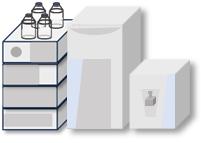PTM Quantitative Analysis Service
PTMs play crucial roles in regulating protein structure, function and intracellular interactions. Quantitative analysis contributes to revealing the type, abundance and dynamics of these modifications under different biological conditions, thus providing insights into the dynamic regulation of cellular processes. Creative Proteomics offers high-quality PTM quantitative analysis services, including identification, quantification and characterization of protein modifications, providing valuable insights into your protein research.
Methods for PTM Quantitative Analysis
Protein PTM quantification requires powerful analytical methods to gain insight into the dynamic regulation of cellular processes. It requires not only determining the presence of PTMs, but also quantifying their abundance under different conditions. Here are some commonly used methods for protein PTM quantification analysis.

Western Blotting
While traditionally qualitative, Western blotting can be adapted for semi-quantitative analysis. By comparing band intensities or using quantitative Western blotting methods, researchers can estimate the relative levels of modified proteins.

MS-based Techniques
MS is a central technique in quantitative PTM analysis. It allows the identification and quantification of peptides carrying specific PTMs. Techniques like TMT, DIA, PRM and label-free methods are commonly applied to relative and absolute quantification.

Antibody-based Techniques
Antibody microarray, ELISA and other antibody-based methods enable the quantitative measurement of specific PTMs. These assays provide high sensitivity and specificity for targeted modifications.
Applications of PTM Quantitative Analysis
Understanding the diversity of protein PTMs is critical to unraveling the complexity of cellular processes and contributes to research in fields such as genetics, biology, medicine, and drug development. Nowadays protein PTM research is deeply applied to many studies such as:
Dynamic Cellular Responses
Quantitative PTM analysis provides a dynamic snapshot of cellular responses to stimuli, stress, or changes in the microenvironment. It helps identify changes in PTM abundance associated with specific cellular states.
Regulation of Enzymatic Activity
PTMs often modulate enzymatic activity, turning proteins "on" or "off" in response to cellular signals.
Disease Mechanisms
Understanding PTM changes in disease states is crucial for unraveling disease mechanisms. Quantitative PTM analysis contributes to identifying potential diagnostic or prognostic markers and therapeutic targets.
Drug Development
In drug development, quantitative PTM analysis aids in assessing the effects of drugs on PTM patterns. It provides insights into the mechanisms of action of drugs and potential off-target effects.
Our Service
Creative Proteomics has advanced protein detection technologies and can provide customized services to researchers and scientists to help them reveal the complexity of PTM using powerful mass spectrometry technologies. Our PTM quantitative analysis services are thoughtful and detailed. The service includes but is not limited to:
Workflow of PTM Quantitative Analysis

Fig.2 Workflow of PTM quantitative analysis
Creative Proteomics brings a wealth of experience to the field of protein research. Our comprehensive services and products cover the entire spectrum of utilizing suitable and efficient gateways. Utilizing our proprietary platform, we have successfully implemented many proteomics research projects. If you are interested, please contact us for more information and a quote.

